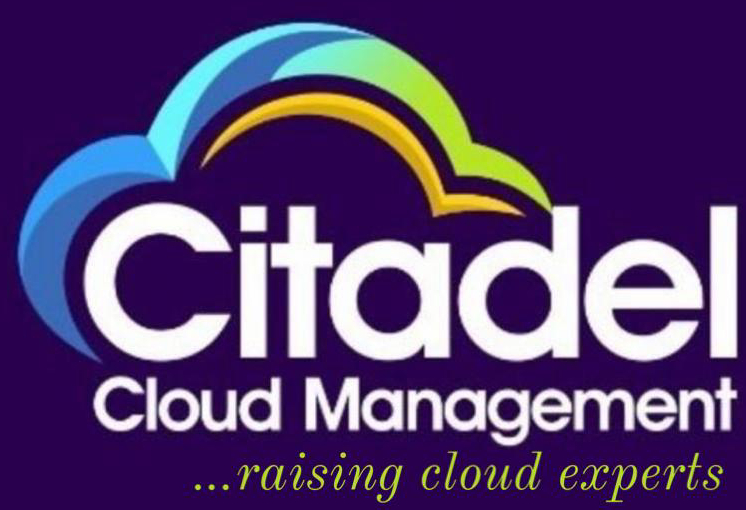
The Role of Automation in DevSecOps Using Infrastructure as Code
citadelcloud
In today’s rapidly evolving technological landscape, the demand for faster, more secure, and more efficient software delivery has never been higher. As organizations strive to meet these demands, the integration of DevSecOps practices and the adoption of Infrastructure as Code (IaC) have emerged as pivotal strategies. Combining automation with DevSecOps and IaC offers a comprehensive approach to streamline operations, enhance security, and drive innovation.
Understanding DevSecOps
DevSecOps is an extension of the DevOps philosophy that integrates security practices into the DevOps process. It emphasizes the importance of security at every stage of the software development lifecycle (SDLC), from planning and development to deployment and monitoring. By embedding security into the continuous integration and continuous delivery (CI/CD) pipeline, DevSecOps ensures that security is not an afterthought but a core component of the development process.
The Importance of Infrastructure as Code
Infrastructure as Code (IaC) is a key enabler of DevSecOps. IaC allows for the management and provisioning of computing infrastructure through machine-readable definition files, rather than physical hardware configuration or interactive configuration tools. This approach offers several advantages:
- Consistency and Reproducibility: IaC ensures that infrastructure configurations are consistent across different environments, reducing the chances of configuration drift and discrepancies.
- Version Control: Infrastructure configurations can be versioned just like application code, enabling rollbacks, audits, and collaborative development.
- Scalability: IaC makes it easier to scale infrastructure up or down based on demand, facilitating efficient resource management.
Automation in DevSecOps
Automation is at the heart of DevSecOps. By automating repetitive and time-consuming tasks, organizations can achieve faster deployment cycles, reduce human error, and ensure more reliable outcomes. Here are some key areas where automation plays a critical role:
Automated Testing
Automated testing is crucial for ensuring that code changes do not introduce new vulnerabilities or break existing functionality. Types of automated testing include:
- Unit Testing: Verifies that individual components of the code function as expected.
- Integration Testing: Ensures that different components of the application work together correctly.
- Security Testing: Identifies and mitigates potential security vulnerabilities.
- Performance Testing: Assesses the performance of the application under various conditions.
Continuous Integration/Continuous Deployment (CI/CD)
CI/CD pipelines automate the process of building, testing, and deploying code. This automation ensures that code changes are continuously integrated and tested, leading to faster and more reliable releases. Key components of CI/CD include:
- Build Automation: Automatically compiles and packages code.
- Test Automation: Runs automated tests to validate the code.
- Deployment Automation: Deploys the code to various environments.
Integrating Automation, DevSecOps, and IaC
The integration of automation, DevSecOps, and IaC creates a powerful synergy that enhances the efficiency, security, and reliability of the software development process. Here are some best practices for integrating these components:
Shift-Left Security
Shifting security left means incorporating security practices early in the development process. By using IaC, security configurations can be defined as code and integrated into the CI/CD pipeline. Automated security checks can be performed at each stage of the pipeline, ensuring that vulnerabilities are detected and addressed early.
Immutable Infrastructure
With IaC, infrastructure can be treated as immutable, meaning that once it is deployed, it is not modified. Any changes are made by redeploying new infrastructure rather than modifying existing instances. This approach reduces configuration drift and ensures a consistent and secure environment.
Continuous Monitoring and Feedback
Automation tools can continuously monitor the infrastructure and application for security threats, performance issues, and compliance violations. Feedback from these tools can be integrated into the CI/CD pipeline, enabling rapid response to any issues.
Case Study: Automation in Action
Consider a scenario where a financial services company adopts DevSecOps and IaC to enhance its software delivery process. By automating their CI/CD pipeline and integrating security checks, the company achieved the following:
- Reduced Deployment Time: Automated deployments reduced the time required to deploy new features from weeks to hours.
- Improved Security: Automated security scans and tests identified vulnerabilities early, reducing the risk of security breaches.
- Consistent Environments: IaC ensured that development, testing, and production environments were consistent, reducing the chances of environment-specific issues.
Challenges and Considerations
While the benefits of automation in DevSecOps using IaC are clear, there are several challenges and considerations to keep in mind:
Cultural Shift
Adopting DevSecOps and IaC requires a cultural shift within the organization. Teams need to embrace a collaborative approach, with developers, operations, and security working together towards common goals.
Tool Selection
Choosing the right tools for automation, CI/CD, and IaC is critical. Organizations need to evaluate tools based on their specific requirements, ease of integration, and scalability.
Skill Development
Teams need to develop the necessary skills to effectively implement and manage DevSecOps practices and IaC. This may involve training and upskilling existing staff or hiring new talent.
Future Trends
As technology continues to evolve, several trends are shaping the future of automation in DevSecOps using IaC:
AI and Machine Learning
AI and machine learning are being increasingly integrated into automation tools to enhance their capabilities. These technologies can provide predictive insights, optimize CI/CD pipelines, and detect security threats more effectively.
Serverless Computing
Serverless computing is gaining traction as it allows organizations to focus on application development without worrying about infrastructure management. Automation and IaC can be used to manage serverless deployments, ensuring consistency and security.
Compliance Automation
Automating compliance checks is becoming essential as regulatory requirements become more stringent. IaC can define compliance configurations, and automated tools can continuously monitor and enforce compliance policies.
Conclusion
The role of automation in DevSecOps using Infrastructure as Code is transformative. By integrating these practices, organizations can achieve faster, more secure, and more reliable software delivery. While challenges exist, the benefits far outweigh the drawbacks, making this approach a critical component of modern software development.
FAQs
What is DevSecOps?
DevSecOps is a methodology that integrates security practices into the DevOps process, ensuring that security is a core component of the software development lifecycle.
What is Infrastructure as Code (IaC)?
IaC is the practice of managing and provisioning computing infrastructure through machine-readable definition files, rather than physical hardware configuration or interactive configuration tools.
Why is automation important in DevSecOps?
Automation is crucial in DevSecOps as it helps achieve faster deployment cycles, reduces human error, and ensures more reliable outcomes by automating repetitive and time-consuming tasks.
How does IaC contribute to security?
IaC contributes to security by ensuring consistent and reproducible infrastructure configurations, enabling version control, and facilitating the integration of security practices early in the development process.
What are the benefits of using IaC in DevSecOps?
The benefits of using IaC in DevSecOps include consistency and reproducibility of infrastructure, scalability, version control, and the ability to integrate security practices into the CI/CD pipeline.
What are some challenges in adopting DevSecOps and IaC?
Challenges in adopting DevSecOps and IaC include the need for a cultural shift within the organization, selecting the right tools, and developing the necessary skills for effective implementation and management.
What future trends are shaping automation in DevSecOps using IaC?
Future trends include the integration of AI and machine learning into automation tools, the rise of serverless computing, and the automation of compliance checks to meet regulatory requirements.
By embracing automation in DevSecOps using Infrastructure as Code, organizations can navigate the complexities of modern software development and deliver high-quality, secure applications at a faster pace.
Table of Contents
Latest Articles

ADDRESS
Houston, Texas USA
US LINE
+1 (346) 652-4970
NIGERIA LINE
081 2852 0152
MAIL ADDRESS
info@citadelcloudmanagement.com
QUICK LINKS
- © 2025. All Rights Reserved By Citadel Cloud Management
AI Assistant
